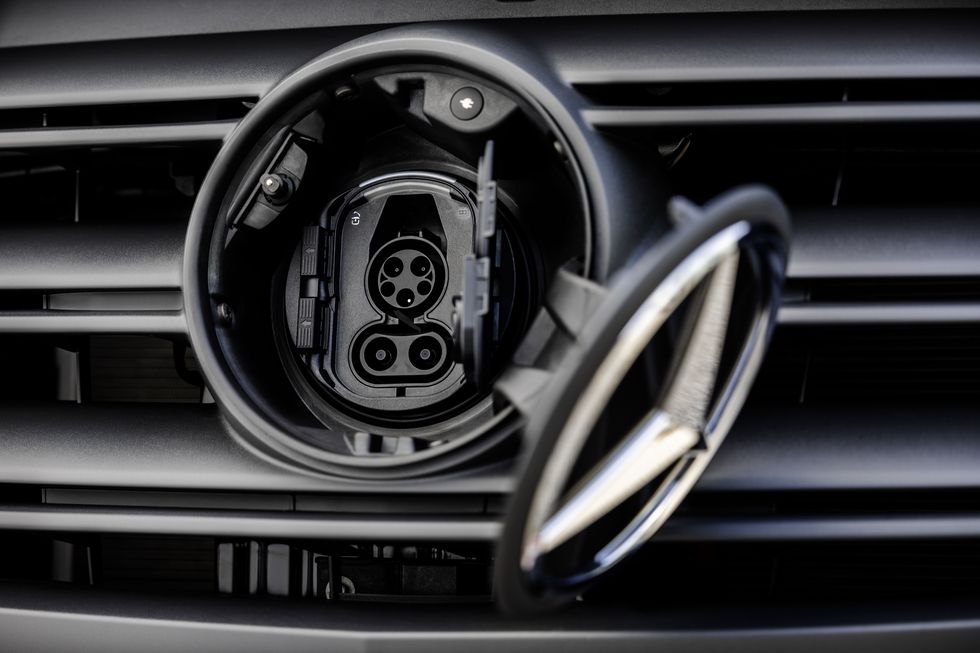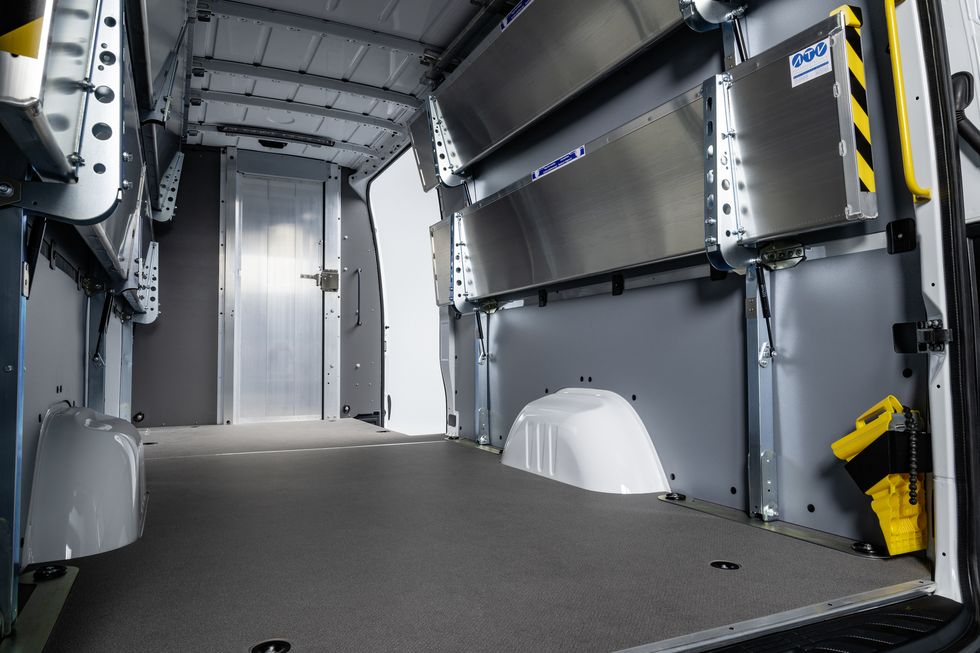UPDATE 8/30/23: Mercedes has released pricing for the 2024 eSprinter cargo van, which starts at $74,181. That price is for the standard-output model with a 134-hp rear-mounted electric motor. The mightier high-output version has a 201-hp e-motor, and it costs an extra $3430, with a base price of $77,611.
Right now, electric cargo vans are a fringe market, but Mercedes-Benz says that starting in 2025, all new Benz vans will be electric. Along with the electric Rivian Amazon vans and the Ford E-Transit, the 2024 e-Sprinter is on the leading edge of stealth delivery vehicles. Imagine the GMC Vandura A-Team van, but completely opposite.
While some of Benz’s EQ models err on the side of freaky futurism, the e-Sprinter mission statement is “like a Sprinter, but electric.” So it looks conventional and offers the same trademark commodious and versatile interior that has caused many a tradesman to trade in their Econoline and join the high-roof Euro-van movement. Which is distinct from the Volkswagen Eurovan movement, in that it tends to involve upfitting from Knapheide rather than Houseplant.
While other markets will have much smaller batteries available, including a 56.0-kWh pack and an 81.0-kWh setup, we’ll only get the largest battery—the 113.0-kWh pack that enabled Benz to complete a 295-mile highway trip during a test run in Germany. Granted, that was at a maximum speed of about 60 mph, but nonetheless a big improvement over whatever range the prior eSprinter could manage with its 47.0-kWh battery. (Why, yes, there already was an eSprinter, but you’ll forgive them for not making a big deal out of it and its 116 horsepower.)
Our eSprinters will be available with either 134 or 201 horsepower and “up to” 295 pound-feet of torque. Top speed is limited to 75 mph, but if you’ve ever driven a Sprinter high-roof model on a windy highway you’ll probably be fine with that. Fortunately, the eSprinter includes Benz’s Crosswinds Assist system, which applies the brakes on the upwind side of the van as necessary above 50 mph to help steer a straight course.
Our eSprinter will launch in the U.S. and Canada in the second half of 2023 as a long-wheelbase cargo van with the high roof. The North American vans will be built in Charleston, South Carolina, but there are two other factories in Germany. Pricing hasn’t been announced, but the destination charge has, and it’s a hefty $2295—cue the outrage from eco-minded plumbers in Charleston, SC.
Benz foresees eSprinters belonging to businesses that mostly ply their trade around town during the day and then park and charge at night; hence not a lot of attention was paid to fast-charging capability. The standard onboard AC charger offers a decent 9.6-kW charge rate, but the standard 50-kW DC fast-charging capability isn’t very competitive unless the competition is a 2011 Nissan Leaf. The DC charging capability can be upped to a still-not-great 115 kW for owners who might venture across a state line on occasion.
With a max payload of 2624 pounds and as much as 488 cubic feet of cargo volume, the eSprinter should be ready for the same sort of grunt work that an internal-combustion model could handle, minus the easy fill-ups and ability to cover mega miles nonstop. Not a vehicle for fledgling bands on tour, the eSprinter. But for a successful mobile dog-washing service, it could be just the thing. A lot of dogs hate baths, but they’ll never hear it coming.
Senior Editor
Ezra Dyer is a Car and Driver senior editor and columnist. He’s now based in North Carolina but still remembers how to turn right. He owns a 2009 GEM e4 and once drove 206 mph. Those facts are mutually exclusive.





